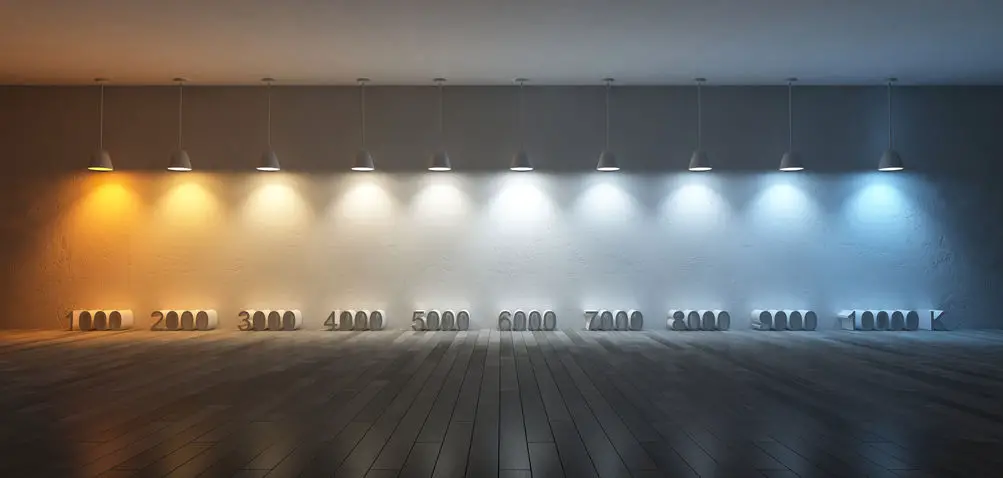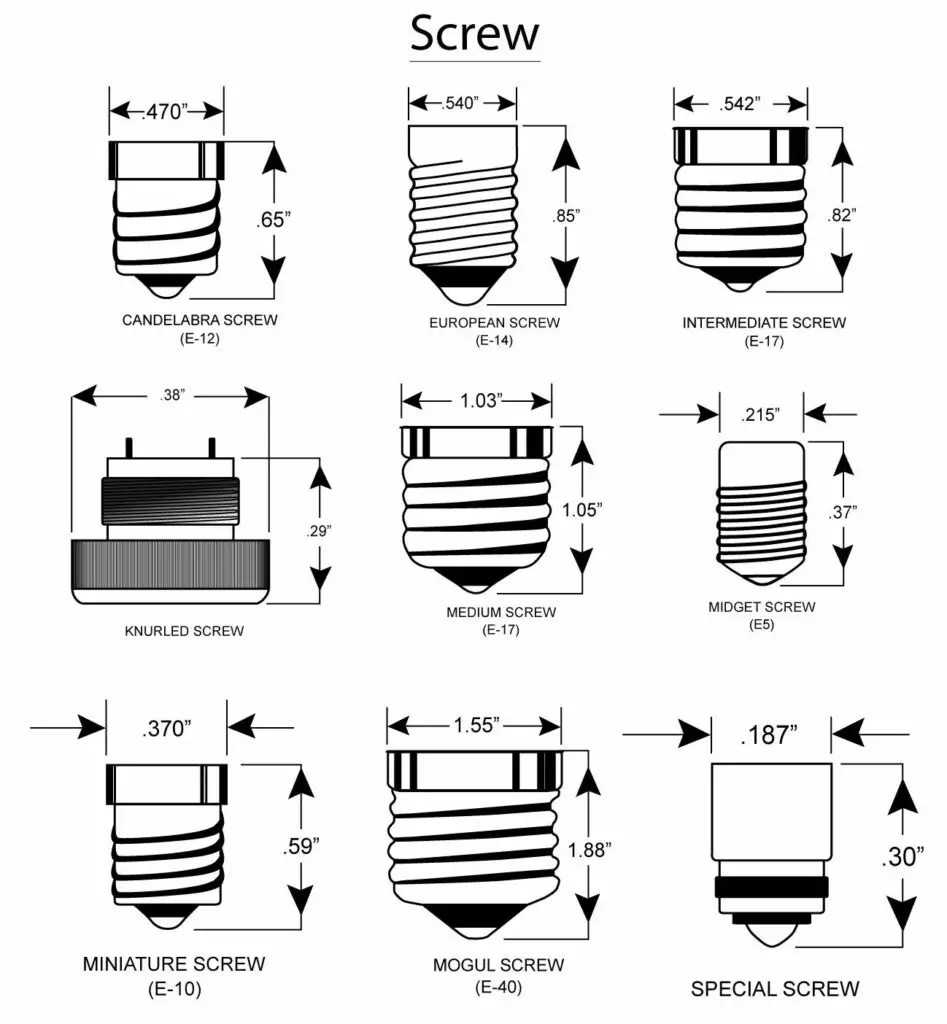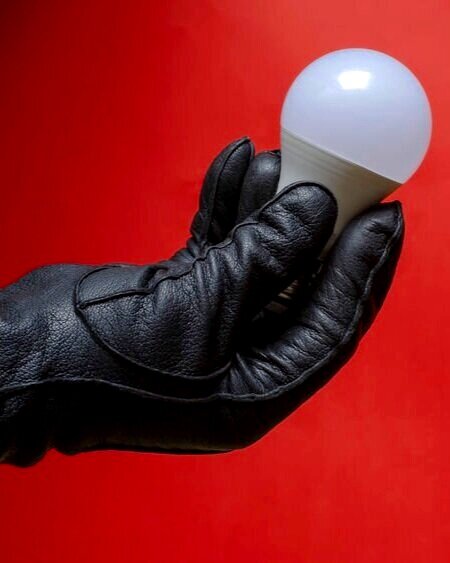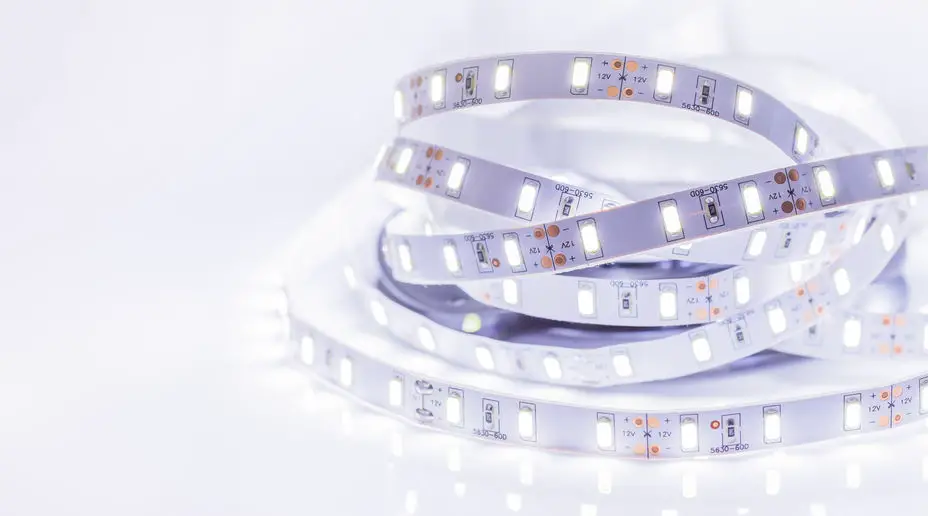How To Select The Right LED When Replacing Old Bulbs
When you are in the process of upgrading your existing lighting to LED lighting there are a few things to consider to ensure the LED bulb has similar characteristics to the bulb you are replacing.
When replacing your existing lighting with LED lighting you want to make sure that the characteristics of colour temperature (K) and the bulb strength (lm) match the bulb you are replacing. You also want to make sure the base of the bulb fits the socket it’s meant for.
Continuing from this we will go more in-depth into these aspects to make sure you know how to find an LED that will appear the same as your normal lighting when lit.
We will also discuss aspects such as dimmable LEDs and CRI ratings in case those qualities are important to your situation.
Selecting The Correct Bulb Strength (Lumens)
The first thing that crosses people’s minds when upgrading to LEDs is to find a bulb that has the same strength as the one you currently have installed.
This is a bit tricky since normally you use Watts (W) to determine how strong a light bulb is. This can cause a lot of confusion since it is not the most accurate way to describe how strong a light bulb is.
The better way to determine the strength of a bulb is through how many Lumens (lm) it produces. Lumen is a unit which can be used to define a quantified amount of light, meaning we can use this number to say how much light a bulb outputs rather than how much energy it consumes.
Below is a chart that describes the conversions between LEDs and other common bulb types in relation to their marked wattage and how many lumens they produce.
| Lumen (lm) | Incandescent | LED |
|---|---|---|
| 300 | 20W | 2W |
| 400 | 25W | 3W |
| 500 | 30W | 3.5W |
| 600 | 35W | 4W |
| 700 | 45W | 5W |
| 800 | 50W | 5.5W |
| 900 | 55W | 6.5W |
| 1000 | 60W | 7W |
| 1100 | 70W | 8W |
| 1200 | 75W | 8.5W |
| 1300 | 80W | 9.5W |
| 1400 | 90W | 10W |
| 1500 | 95W | 11W |
| 1600 | 100W | 12W |
Knowing this information it is easy to know what strength LED bulb you should get.
Firstly you need to determine what lumen value you are looking for, which you can do by comparing it to the incandescent equivalent of watts the bulb uses.
From then you will know what lumen output you wish your new LED bulb to output, which means you can filter your search by that. When you find an LED bulb that produces the same amount of lumens you will see that the wattage of that bulb will be similar to the values prescribed in the table.
The LED wattage may not be exactly the same as in the chart, however, due to the luminous efficacy being different.
In the table, we assumed a luminous efficacy of 140 lm/W, but LEDs can have a luminous efficacy between 80-200 lm/W, which would cause the outputted lumen to be different in relation to how many watts it consumes.
Selecting The Correct Colour Temperature
The next step is to make sure you select a bulb with the same colour temperature as your old bulb.

Colour temperature or Kelvin (K) describes the perceived “temperature” of any given light source, which is normally defined as either warm or cool. For a more scientific and elaborate Explanation of Colour Temperature in Lighting, we recommend you click here.
Which colour temperature you want may depend entirely on the application of your bulb. If the bulb is meant to go in an area that is supposed to feel relaxing and pleasant your best option are lights on the warmer spectrum.
But if your plan is to put your bulb somewhere where work and human efficiency are a priority you are better off going for cooler lighting. This all has to do with how human biology reacts to the lighting of different colour temperatures.
Here is a list defining what counts as warm and cool in terms of their Kelvin values:
- Extra Warm: 2000-2700K
- Warm White: 2700-3500K
- Cool White: 3500-6000K
- Daylight: 6000K
- Cold white: 6000K+
If you are still unsure what colour temperature you should replace the bulb with we recommend you simply switch it to the temperature of the bulb you are replacing. To do this you can go to our article How To Identify The Colour Temperature Of Your Lights.
That said, you can choose whichever colour temperature you think is suitable. We are simply giving you sensible directions as for what to do.
Selecting A Dimmable vs Non-Dimmable LED Bulbs
With bulb strength and colour temperature out of the way, there are still a few more things you need to consider, the next one being dimmable vs non-dimmable LED bulbs.
Not all LED bulbs are meant to be dimmed. If the box the bulb is packaged in does not specifically state that the bulb is dimmable it is most likely not meant to be dimmed.
This is mainly because it is almost always stated if an LED bulb is compatible with dimmers since it is usually a big selling point for bulb manufacturers.
If the socket the LED bulb is meant to be placed in is connected to a dimmer of some sort you want to make sure you get a bulb that specifically states that it can be dimmed.
Otherwise, you may run into issues between the dimmer and the bulb. This sort of problem can appear in a few ways such as;
- The bulb flickering
- The bulb not turning on
- The bulb dims in unpredictable ways
For these reasons it is advised that you make sure that the bulb is compatible with being dimmed if it’s going on a dimmer circuit. However, if the bulb is only going on a simple light switch you can get any functional LED bulb, dimmable or not.
Related articles:
Are LED Bulbs Dimmable?
Why LEDs Flicker and How To Make It Stop
Selecting A Bulb With The Correct Base
Another important aspect of changing any light bulb is selecting the right base for the bulb, in terms of its socket.

There are many different types of sockets when it comes to light bulbs. The most common type in Europe and the US is the Edison screw base, but its size and type can vary depending on where you live or the specific sockets in your home.
For this you want to figure out what base you need. You can do this in a few ways.
Normally it should say what type and size the screw is on the bulb you are trying to replace. If not that it should say it somewhere on the fixture in which the bulb is meant to go in.
Selecting A Bulb With Appropriate CRI Rating
The last thing you may want to consider is getting a bulb with an appropriate CRI rating. The reason we emphasize the “may” is that for most applications this is not necessarily that important.

CRI or Colour Rendering Index is a grading score used to grade a light source’s ability to accurately reflect light. The score is between 1-100 where 1 is extremely poor colour rendering and 100 is perfect colour rendering.
For a more detailed and scientific explanation of What CRI Is In Lighting Is we recommend you go here.
In certain contexts, the CRI of a light source is very important. For example, if the bulb is meant to illuminate an art display or food in a grocery store the CRI suddenly becomes very important as a bulb that can’t project light properly will make the objects appear the wrong colours.
That said if the bulb is meant for regular use in a home or something not so sensitive it doesn’t really matter what the CRI of the bulb is as long as it is above 60-70. You should be able to find this information on the packaging of the bulb.
However, if you do find that the CRI of the bulb is important for whatever reason you should look for a high CRI LED bulb. While the term “high” can be subjective, it is wise to look for a bulb with a CRI of 90+ if CRI is of importance.
Summary
To summarize, these are the main things you should consider when upgrading your already existing lighting to LED lighting.
- Make sure that the strength of the new bulb matches the strength of the old one it’s replacing
- Select a bulb with the same colour temperature as the bulb you are replacing
- Make sure the screw/base of the new bulb matches the bulb it’s replacing
- Consider if the LED bulb needs to be dimmable or not
- Consider if the colour rendering of the bulb is important, and select a LED which performs high in CRI if it does.



